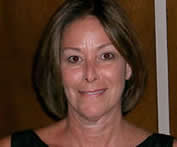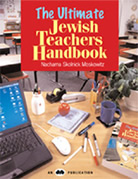 Ellen S. Fishman Ellen S. Fishman |
|
By Ellen S. Fishman
The ways in which students learn are as diverse as their physical appearances. When we recognize that they have different needs—for example, they may need to hear the information in addition to reading it—we can begin to focus on delivery as well as content. The following techniques are drawn from the article entitled "Special Needs Students" by Ellen S. Fishman found in The Ultimate Jewish Teacher’s Handbook (A.R.E.), edited by Nachama Skolnik Moskowitz.
|
|
|
1. Involving professionals and parents
|
|
|
Learn as much as possible about your students before the start of the school year. Gather pertinent information from parents and other professionals, such as the religious school director, previous teachers, and learning experts. If a student has significant special needs, work with the parents to obtain school records. This information can give you an insight into how best the student learns.
|
|
|
|
|
Develop and maintain a positive relationship with parents. Call parents before the start of the school year and at regular intervals throughout the year. Send home short notes or emails updating them on their child’s progress. Ask them to participate in family education programs.
|
|
|
|
|
Don’t be afraid to ask for help when students don’t respond to the techniques and strategies you use. Seek assistance from the religious school director or other personnel who might be able to assist. In some communities, the central agency for Jewish education has a special education department and personnel who provide support to area religious schools. Visit the agency and its resource room and consult with the experts.
|
|
|
|
|
Expand your repertoire of teaching methods and techniques. Pursue professional development, read books on how children learn, or participate in a professional online listserv.
|
|
| |
|
2. Building a bond with students.
|
|
|
Call students before the start of the school year or send home a note or an email saying how much you’re looking forward to having them in your class.
|
|
|
|
|
Interview students to find out how they learn best. They may need to see or read the information, hear it, touch or manipulate it, or all of those approaches.
|
|
|
|
|
Provide a friendly, safe, nurturing environment that encourages student learning. Students should feel it’s alright to make a mistake. Engender respect among peers and between students and teacher by demonstrating that sarcasm and negative comments have no place in the classroom.
|
|
| |
|
3. Organizing and structuring the classroom and class work
|
|
|
Seat students in ways that encourage learning. An easily distractible student, or one with an auditory difficulty, should be seated near you in the front row, away from windows and doorways. Separate students who might distract one another. Be aware of the delicate balance between too much stimulation and too little.
|
| |
|
|
Provide a written class schedule outlining the regular routine and changes that will occur on a specific day. Students with special needs respond well to structure and routine. |
| |
|
|
Allow students to take breaks during the school session to help avoid restlessness and "acting out." |
| |
|
|
Avoid competitive activities, such as games and public quizzes, which raise anxiety levels. Instead, have students compete against themselves ("my previous best score was X, now it is Y"). |
|
| |
|
4. Assigning class work
|
|
|
Write class work and assignments on the board and give students time to copy the assignments, or photocopy assignments and give the printed copy to the students.
|
| |
|
|
Modify activities to accommodate the skills, learning styles, and abilities of all children in the class. For example, if the students are creating their own midrashim, allow them to illustrate their piece rather than write it. Give students more time to complete assignments.
|
| |
|
|
Chunk materials into manageable segments. Students remember best what comes first in an activity and next best what comes last, so divide the class into numerous short activities. Think of the lesson as a pizza pie, divided into activity segments or slices, with several beginnings and endings.
|
| |
|
|
Make minor curricular accommodations to help students succeed, for example, underline or circle important points, provide practice questions in advance of a test, or allow students to complete only a portion of an activity.
|
| |
|
|
Provide a variety of ways for students to demonstrate mastery. For example, allow students to do a report orally, in writing, or through a poster or other project.
|
| |
|
|
Use cooperative learning techniques to enhance student understanding. For example, incorporate "Think, Pair, Share" into lesson planning. Randomly pair or group students, ask a question, allow them a minute or two to discuss, then call on one student from each pair or group to answer. This technique allows students who rarely participate to check with their classmates for accuracy before they answer, then to do so with confidence.
|
| |
|
|
At the end of the lesson, review the main points you covered that day and remind students about homework assignments.
|
|
| |
|
Providing all students with opportunities to shine in your classroom and creating a nurturing, safe environment fosters tolerance among students and an atmosphere of support. Above all, it promotes the notion that we are all created in God’s image, and as such, we should treat one another with tolerance and respect.
Ellen S. Fishman has worked for twenty-five years as an administrator and teacher in the field of learning disabilities. She is currently Executive Director of the Learning Disabilities Association of Cuyahoga County (LDACC) in Cleveland, Ohio. Nachama Skolnik Moskowitz, editor of The Ultimate Jewish Teacher’s Handbook, is Director of Curriculum Resources and Senior Director at the Jewish Education Center of Cleveland.
|
|
|



